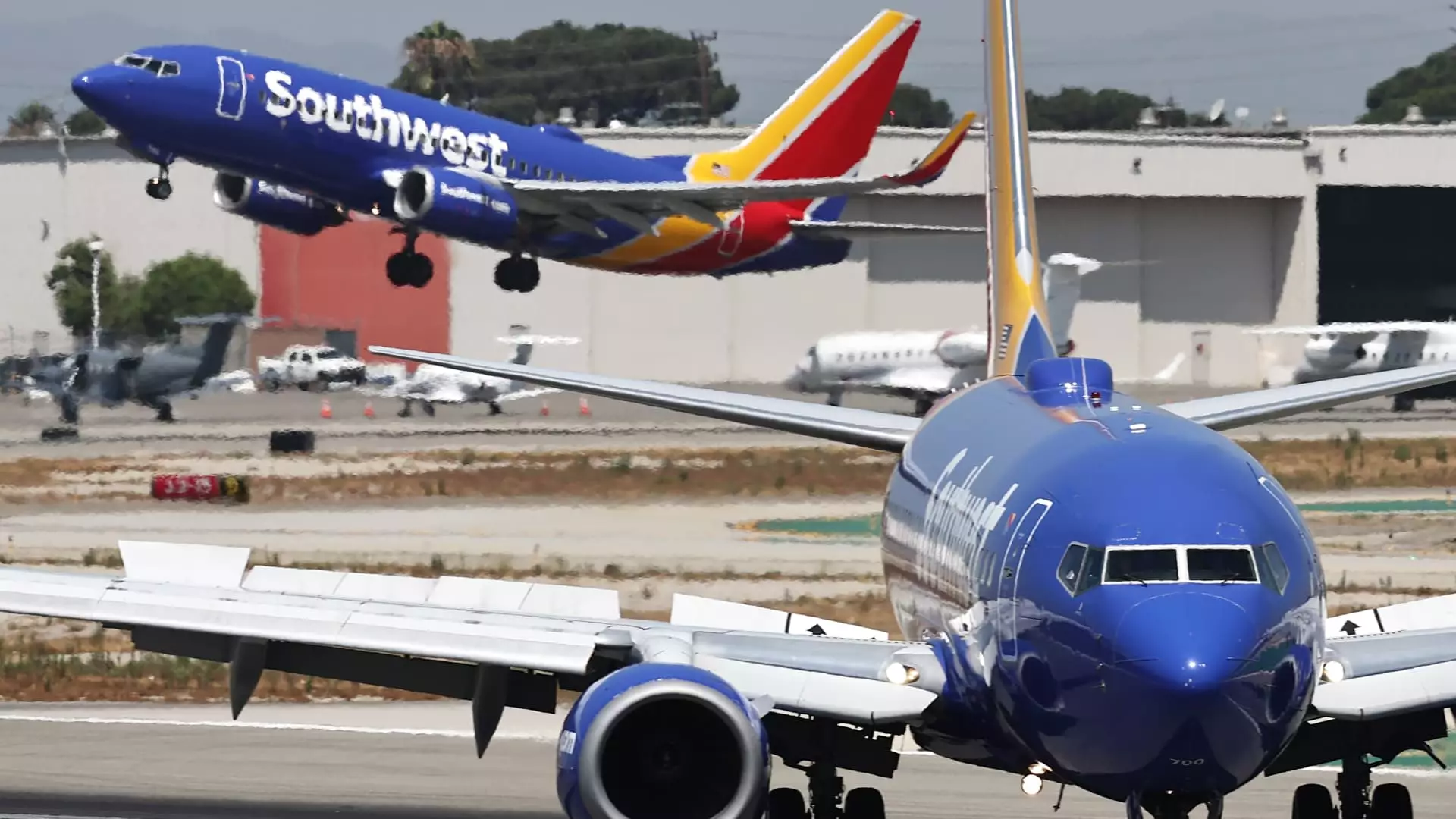In a surprising turn of events for Southwest Airlines, the airline has raised its revenue projections for the third quarter, an optimistic shift from previous forecasts. The company now anticipates unit revenue to increase by as much as 3% compared to the same quarter last year. This revision reflects a resilience in demand, particularly attributed to the rebooking of passengers affected by the CrowdStrike outage in July. This proactive measure illustrates Southwest’s agility in navigating disruptive events that can significantly impact flight operations and customer trust.
The forecast adjustment is accompanied by a bold decision from the airline’s board of directors to authorize a staggering $2.5 billion in share buybacks. Such a move signals robust financial health and an intent to enhance shareholder value, even as the company contends with internal and external pressures. Importantly, these changes come amid scrutiny from Elliott Investment Management, an activist investor advocating for a leadership change at the airline. Evidently, Southwest is not merely reacting; it is actively seeking to reassure investors while executing a strategic pivot.
As part of its revamp, Southwest has also announced the appointment of Bob Fornaro to its board of directors. Fornaro’s history with the airline landscape, including his tenure as CEO of Spirit Airlines and AirTran, indicates a well-informed choice aimed at bolstering the board’s expertise. His prior experience with AirTran, which merged with Southwest in 2011, may provide valuable insights as the airline seeks to streamline operations and enhance service offerings. This strategic board addition suggests a commitment to infusing fresh perspectives, a tactic that can often fortify corporate governance amid turbulent market conditions.
Furthermore, the leadership team, including CEO Bob Jordan, is positioning itself to reestablish investor confidence. This effort is crucial as they face rising pressure from Elliott, which has made its stance clear regarding management effectiveness. The upcoming investor day presentation will be pivotal, as executives lay out their vision for the airline’s future while addressing the pressing concerns raised by shareholders.
In a bid to modernize its business model, Southwest is adopting sweeping changes reminiscent of industry trends, including the introduction of assigned seating and extra-legroom options. While these enhancements promise to improve the customer experience and generate additional revenue streams, the timeline for implementation indicates a long-term strategic focus. The new seating arrangements, projected to roll out in 2026 pending regulatory approvals, will feature cabins with significant legroom improvements—moving from a standard pitch of 31 inches to at least 34 inches in select seating. Anticipated to contribute around $1.7 billion in earnings by 2027, these changes underscore a forward-thinking approach designed to bolster profitability.
On the other hand, the airline remains steadfast in its commitment to allowing passengers to check two bags for free. This policy, aimed at differential positioning against competitors, exemplifies Southwest’s foundational principle of customer service as a competitive advantage. By reaffirming this long-held practice, Southwest intends to capture market share, even if it incurs some revenue losses from potential baggage fees.
Despite these positive developments, Southwest confronts significant operational challenges, particularly concerning a shortage of new aircraft due to production delays from Boeing. The anticipated 737 Max 7, crucial for servicing specific routes, has not yet received certification, prompting Southwest to reassess its flight offerings. The airline’s decision to cut unprofitable routes in Atlanta illustrates a tactical move to adjust operational capabilities in line with current fleet limitations. This might lead to more than 300 pilots and flight attendants reassigned as part of a broader cost-reduction strategy.
While Southwest Airlines exhibits potential for a promising financial future punctuated by a strategic overhaul of its business model, it faces a delicate balance. The aviation landscape is fraught with uncertainties, from regulatory hurdles to competition pressures. The coming months will be critical as both leadership and operational strategies evolve, shaping the trajectory of one of the airline industry’s most enduring brands.


Leave a Reply